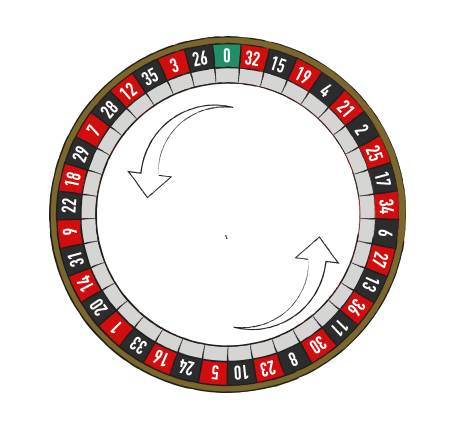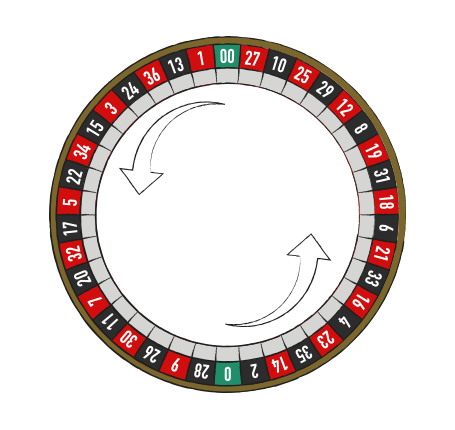- There are 38 numbered pockets for the ball to land in, 1-36 and 0, 00.
- Half the numbers are red; half are black and the 0 and 00 are usually green, although on some wheels these might be blue.
- You can see that directly (or almost directly) across from each even number is an odd number. Check out 34 and you will see that it is almost directly across from 33. Then look at 36 and it is across from 35.
- This is not, however, a perfect design since the numbers 18 and 19 are only separated by the number 33.
- Pairs of odd numbers alternate with pairs of even numbers except in the areas of the 0, which splits 2 and 28, and 00 which splits 27 and 1.
- The colors of the numbers match the color of the numbers on the layout. The colors only deal with one bet, the black or red.

The Number Sequence on the European Wheel
- There are 37 numbered pockets for the ball to land in, 1-36 and 0.
- Half the numbers are red; half are black and the 0 is either green or blue.
- Some of the positions of the numbers are similar to the American wheel with an odd number being directly across from an even number such as 27 across from 28 but this does not prevail throughout the wheel.
- The colors of the numbers match the colors on the layout; again this is used for one bet, the red and black.
Those are only two examples but don’t fret if you’re getting nightmarish flashbacks of high school mathematics class. The founding mathematicians and physicists of this age-old game worked out the calculations many moons ago, and we’ve summed them up in payouts tables you can refer to as you play on the Odds and Payout page. Best of all, it’s not cheating.















